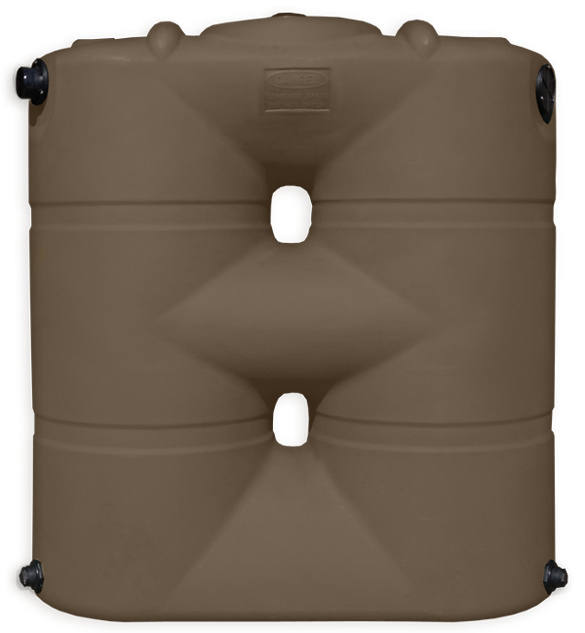Exploring the Different Usages of Rainwater Storage Tanks for Residential and Commercial Properties
As the worldwide emphasis on sustainable living practices proceeds to intensify, the application of rainwater storage tanks in both residential and industrial setups has actually emerged as a significant solution. These storage tanks use a storage tank for rainwater harvesting, presenting a myriad of prospective applications that prolong much past plain storage. From irrigation to bathroom flushing and landscape design, the convenience of rainwater tanks is huge. Their combination into industrial buildings opens up a realm of possibilities for environmentally conscious businesses. The diverse usages of rain containers offer an engaging instance for their fostering, not just as a functional water-saving action yet additionally as a testimony to accountable resource administration.
Advantages of Utilizing Rain Containers
Making use of rainwater tanks uses various advantages for both families and communities in regards to water conservation and sustainability. Among the essential advantages of utilizing rain storage tanks is the substantial reduction in dependence on mains water - Slimline water tanks. By catching and storing rainwater for later usage, individuals and areas can decrease their need for treated water, eventually easing the problem on water therapy facilities and lowering energy usage related to water transport and therapy
Furthermore, rain harvesting with containers offers a reputable alternative water resource throughout times of water restrictions or lacks. This saved rainwater can be used for numerous non-potable purposes such as watering, purging toilets, and cleaning clothes, minimizing the strain on standard water resources. Furthermore, utilizing rain tanks can cause set you back financial savings for both homes and areas by lowering water expenses and reducing the demand for costly infrastructure growths to satisfy expanding water needs.
Basically, the use of rain containers provides a lasting and eco-friendly strategy to water management, benefiting both private customers and the more comprehensive area in regards to water preservation, cost-efficiency, and resilience.
Rainwater Tank Usage in Irrigation
Given the benefits of rainwater tanks in saving water resources and minimizing dependence on keys water system, a substantial application depends on making use of saved rain for watering objectives - Slimline water tanks. Rain collecting systems can properly collect and store rainwater, offering a sustainable water source for watering yards, grass, and agricultural fields. By making use of rain for watering, homeowner can lower their dependancy on treated water sources, leading to set you back financial savings and environmental benefits

One of the key benefits of utilizing rainwater for watering is its pureness. Rainwater is naturally soft and devoid of the chemicals and additives commonly located in mains water, making it suitable for beneficial plants without the risk of damaging results. In addition, rainwater goes to ambient temperature level, which can profit plant growth by preventing temperature shocks that can take place with cool see here mains water.
Rainwater Storage Tanks for Bathroom Flushing

Applying rainwater containers for bathroom flushing is an affordable and eco friendly technique that can be quickly incorporated into both residential and industrial homes. The saved rainwater can be made use of to flush commodes by connecting the container to the existing plumbing system. This basic yet effective option can significantly reduce water intake in a building, specifically in areas where water shortage is a problem.

Incorporating Rainwater Tanks in Landscape Design
A reliable approach for boosting sustainability in landscape design includes integrating rainwater tanks to maximize water use and advertise green techniques - Slimline water tanks. Integrating rainwater containers in landscape design provides countless advantages for both domestic and commercial properties. These containers can catch and store rain overflow from roofs, which can after that be utilized for sprinkling yards, grass, and plants. By utilizing rain for watering objectives, property proprietors can decrease their dependence on metropolitan water sources, causing set you back financial savings and conservation of precious water sources.
Along with providing a sustainable water my latest blog post resource for landscaping requirements, rain tanks can also assist in taking care of stormwater runoff. By catching rain that would otherwise stream right into storm drains, these storage tanks can minimize erosion, minimize flooding threats, and prevent contamination of all-natural water bodies. Incorporating rainwater containers in landscape design can contribute to the total aesthetic charm of the building, showcasing a commitment to environmental stewardship.
Industrial Applications of Rain Containers
Using rain tanks in commercial settings provides a lasting option for water monitoring and preservation, profiting organizations and the environment alike. Commercial applications of rainwater storage tanks vary and progressively prominent as a result of the cost savings and environmental advantages they provide. One key industrial use is for irrigation functions, where gathered rainwater can be utilized to water landscaping, gardens, and agricultural fields surrounding business residential properties. This can cause considerable reductions in water bills and reliance on municipal water resources.
In addition, rain collected in storage tanks can be dealt with and made use of for non-potable purposes within business residential properties, such as flushing commodes, cleaning, and cooling systems. In general, the consolidation of rain containers in business settings presents a useful and ecologically accountable technique to water monitoring.
Verdict
From irrigation to commode flushing and landscape design, the usage of rainwater tanks can aid preserve water sources and lower water costs. On the whole, the convenience and sustainability of rain tanks make them a valuable financial investment for any type of residential property owner looking to increase water performance.